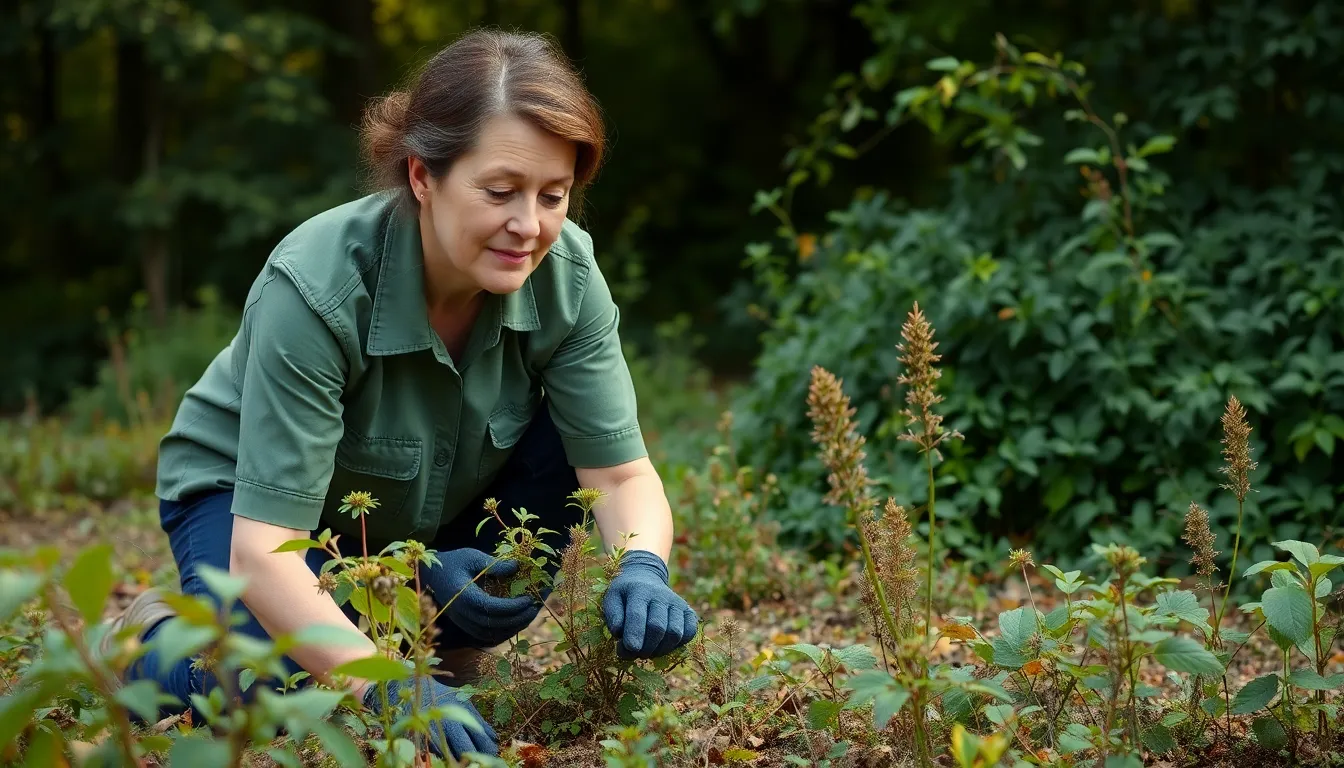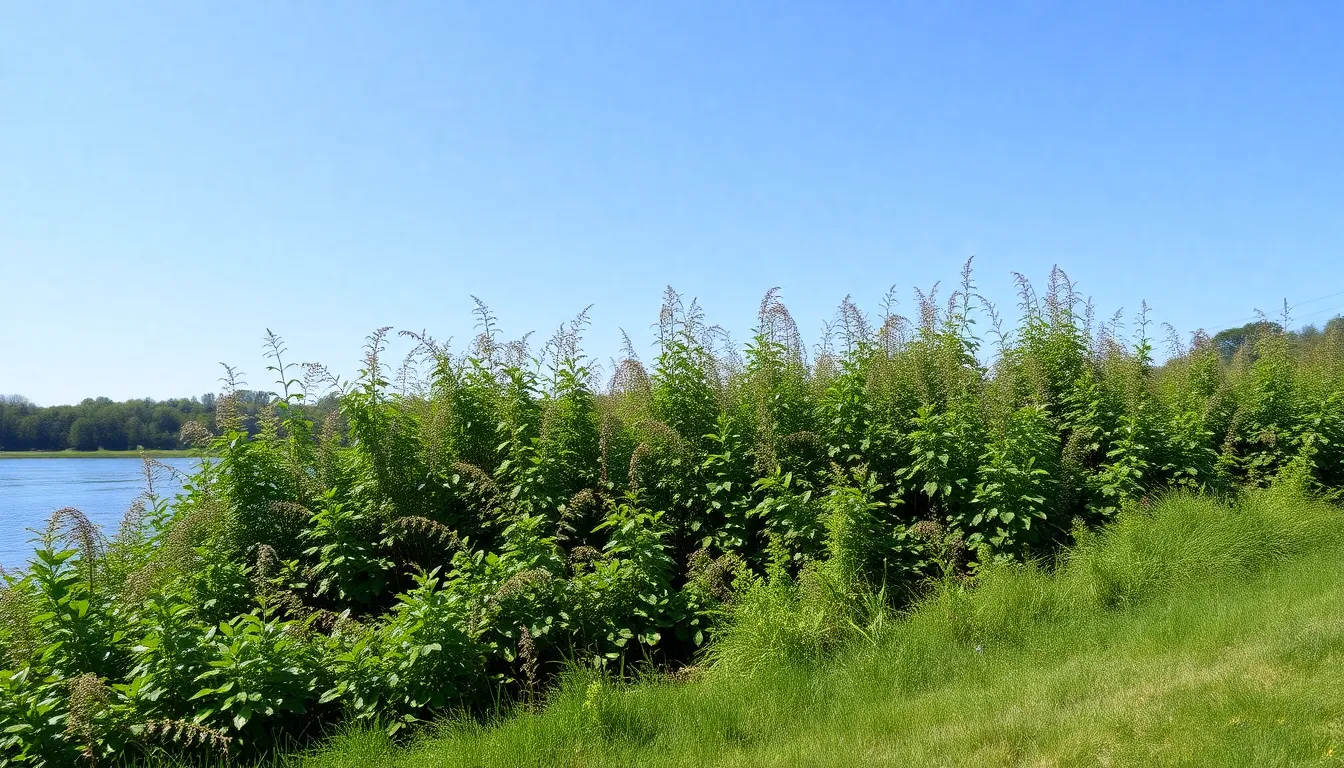Phone:
(701)814-6992
Physical address:
6296 Donnelly Plaza
Ratkeville, Bahamas.

In the wild world of botany, not all plants are welcome guests. Invasive species are like that one friend who overstays their welcome, taking over your garden and leaving chaos in their wake. These green intruders can wreak havoc on local ecosystems, and while they may look harmless, they’re anything but.
Research highlights an increase in invasive plant sightings across various regions. Authorities reported a 20% rise in the spread of species like Japanese knotweed and kudzu. Monitoring efforts now focus on early detection and rapid response to curb infestations.
Conservationists emphasize the importance of public awareness. Educational campaigns help homeowners identify invasive plants in their gardens. Additionally, community efforts promote the removal of these harmful species in local parks.
Legislation changes also play a crucial role in managing invasive plants. New laws in several states now restrict the sale of specific invasive species. As a result, nurseries must comply with these regulations, aiding conservation efforts.
Data shows that climate change exacerbates the growth of invasive species. Warmer temperatures and altered precipitation patterns create favorable conditions for these plants. Understanding these trends helps scientists predict future spread patterns.
Collaboration between organizations leads to innovative solutions. Researchers and local governments are joining forces to develop biocontrol methods. Efforts focus on introducing natural predators to invasive species without harming native flora.
Lastly, ongoing studies evaluate the economic impact of invasive plants. The USDA estimates that invasive species cost the U.S. over $120 billion annually in damages and control efforts. Recognizing this economic burden encourages proactive measures in management and prevention.

Invasive plants severely disrupt local ecosystems and incur significant costs. Their effects extend beyond mere aesthetics, impacting environmental balance and economic stability.
Invasive plant species threaten native biodiversity. They outcompete indigenous plants for resources, leading to reduced species variety. A rise in invasive species sightings, such as Japanese knotweed and kudzu, negatively affects habitats, harming wildlife reliant on native flora. According to recent research, invasive plants alter soil chemistry, which can affect water quality. Climate change further facilitates their spread, granting ideal conditions for growth. Strategies for early detection become crucial as ecosystems face increasing pressure. Conservationists emphasize the importance of public education in identifying and controlling these harmful plants.
Invasive species lead to substantial financial burdens. The United States incurs over $120 billion in economic losses annually due to their presence. Costs arise from damaged infrastructure and increased management expenses. Invaded landscapes diminish tourism potential, affecting local economies. Regulatory changes that restrict sales of certain invasive plants aim to alleviate these financial strains. Collaborative efforts across organizations work towards innovative solutions, saving budget resources. By implementing effective management strategies, communities can reduce long-term economic impacts, fostering healthier environments for both nature and residents.
Invasive plant species pose severe threats to ecosystems. Their presence disrupts native flora and fauna, leading to significant ecological and economic consequences.
Japanese knotweed, known scientifically as Fallopia japonica, aggressively spreads across landscapes. This species can grow up to 10 feet tall and outcompetes native vegetation, rendering areas less hospitable to local species. Its extensive root system often leads to structural damage, particularly in urban environments. Effective removal requires professional assistance due to the plant’s resilience and ability to regenerate from small fragments.
Japanese knotweed is primarily found throughout North America and parts of Europe. Its presence spans urban and rural settings, thriving in disturbed soil and along waterways. Reports indicate a 20% rise in populations across multiple states, making it essential for communities in affected regions to implement monitoring programs. Observations show that southeastern states demonstrate higher concentrations, leading to targeted management strategies by local authorities.
Effective management of invasive plants relies on diverse strategies tailored to specific situations. Several techniques exist to control these aggressive species, focusing on chemical and biological methods.
Chemicals like herbicides offer a quick way to manage invasive species, especially in hard-to-reach areas. Glyphosate and imazapyr represent frequently used herbicides that target various invasive plants. Application timing is crucial; utilizing these chemicals during the plant’s active growth phase enhances effectiveness. Precautionary measures must ensure minimal environmental disruption. Specific restrictions apply to certain herbicides based on local regulations, protecting native flora and fauna from unintended harm. Monitoring treated areas promotes long-term success, allowing for adjustments in strategy based on observed plant responses.
Biological control utilizes natural predators or pathogens to diminish invasive plant populations. Researchers focus on identifying species that specifically target problematic plants while preserving native ecosystems. Introducing insects, such as the leaf beetle that targets certain invasive weeds, demonstrates significant promise. Collaboration among researchers and conservationists enhances the success of these methods. Ongoing studies assess the ecological impacts of introducing new species, ensuring these solutions do not inadvertently disrupt local biodiversity. Employing biological control offers a sustainable alternative that relies on nature to restore balance in affected environments.
Community involvement and education play crucial roles in managing invasive plant species. Local organizations are hosting workshops that educate residents about identifying and handling invasive plants. These events encourage active participation, fostering a sense of responsibility towards local ecosystems.
Many communities are organizing volunteer days for residents to help remove invasive plants from public spaces. This hands-on experience helps individuals understand the challenges posed by species like Japanese knotweed and kudzu. According to recent trends, targeted educational campaigns have improved awareness and engagement across neighborhoods.
Schools are also incorporating invasive species education into curricula. Programs teach students about native ecosystems and the impacts of invasive species, promoting long-term ecological stewardship. By engaging youth, communities cultivate future generations committed to environmental health.
Social media platforms facilitate awareness campaigns, enabling wider dissemination of information related to invasive plant sightings and management strategies. Residents can share their experiences and successes in controlling invasive species, providing valuable insights to others. This collaborative effort strengthens community ties and enhances overall effectiveness in combating invasive threats.
Legislative changes threaten certain invasive plants through restrictions, yet community initiatives complement these efforts. Neighbors working together can ensure compliance with new regulations while sharing resources, such as herbicides or educational materials. Emphasizing local teamwork creates a united front against invasive plant proliferation.
Considerable resources are available for communities through partnerships with conservation organizations. These alliances provide access to expertise and funding for educational programs. Active participation in such partnerships can significantly escalate local efforts to manage and educate about invasive species.
Addressing the challenges posed by invasive plant species requires a multifaceted approach that combines education community involvement and innovative management strategies. As awareness grows and local initiatives flourish it’s crucial for individuals to understand their role in protecting native ecosystems. By actively participating in removal efforts and supporting legislative changes communities can significantly reduce the impact of invasive species.
The ongoing collaboration among researchers conservationists and residents plays a vital role in restoring balance to affected environments. With continued focus on effective management and community engagement the future of local ecosystems can be safeguarded against the threats posed by invasive plants.